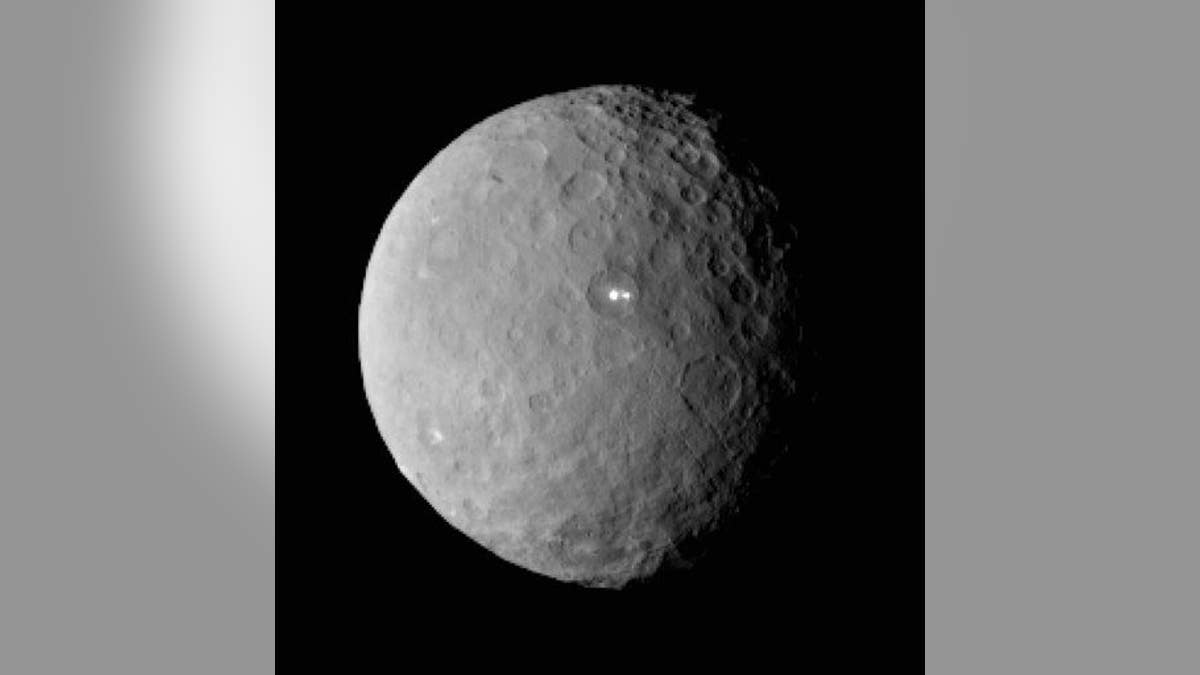
Two of the bright spots seen on Ceres are close together in a crater. (AP Photo/NASA/JPL-Caltech/UCLA/MPS/DLR/IDA, File)
NASA now has a spacecraft in orbit for a long-awaited look at Ceres—and while researchers are learning a lot about the dwarf planet, they're now doubly puzzled by the planet's mysterious bright spots.
As the Dawn spacecraft closes in, scientists have realized there are multiple bright spots, and infrared imaging has revealed that while some of them are the same temperature as the surrounding area, at least one is much colder, Nature reports.
One theory is that the cold spot could be a watery "cryovolcano," but a NASA researcher tells the New Scientist that before deciding there's "something strange going on, we have to be prudent and rule out the easy possibilities" when Dawn gets a little closer.
Images from Dawn have already revealed that Ceres "was not just an inert rock throughout its history," the mission's principal investigator says in a NASA press release.
"It was active, with processes that resulted in different materials in different regions. We are beginning to capture that diversity in our color images." Before Ceres, Dawn visited a smaller asteroid, Vesta, the mission chief says, and for reasons that are unclear, Ceres appears to have fewer large craters than Vesta.
Starting later this month, Ceres is expected to yield more of its secrets as Dawn zooms in. (Ceres is classed as the smallest dwarf planet and the largest asteroid—and, after water vapor was detected, as a possible host for life.)
This article originally appeared on Newser: Ceres Bright Spots Now a Double Mystery
More From Newser
